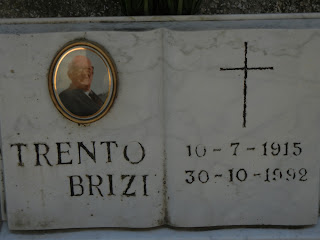il
24 novembre, 2012
There's
a song with the words “there's no place like home for the holidays”
and this was certainly true for me this year. As much as I love to
travel and as much as I enjoyed my last two Thanksgiving celebrations
in Assisi, there's something to be said for the aroma of turkey and
the fixings coming from one's own oven. And then there's the Macy's
Thanksgiving Day Parade, a landmark event once every year on the
fourth Thursday in November; memories of growing up in New York
filled my head as I watched the spectacle on TV while my pumpkin
chocolate chip bread was baking in the oven... it was one of those
“feel-good” mornings.
I
actually indulged in two Thanksgiving celebrations this year; the
first was on the Friday evening before the holiday when six of us ate
the turkey, sweet potatoes, string beans, salad, cranberry sauce,
and pumpkin cheese cake that came from my kitchen and the second this
past Thursday with friends, Linda and Larry...This time it was Linda
who roasted the turkey and made the stuffing and it was all mighty
fine. So, who says one has to be in Italy to have a delicious meal?!
We've
had glorious weather this week; great for taking brisk walks in the
neighborhood or on the beach. Walking on the shore along the Pacific
Ocean is a big part of why I love living here; there's something
about the sea that gets deep inside of me. I don't know if being a
Pisces plays a role, but the ocean touches me in a way that nothing
else does. Early
on Thanksgiving afternoon, I took a walk through the neighborhood.
The leaves on our trees have been actively changing colors for the
past three weeks and now they are falling rapidly to the ground.
November is one of my favorite months in San Diego; the air is
getting colder and that “autumn feel” is in its full glory.The
day after the holiday, while thousands of shoppers went looking for
bargains, I went to the beach. The marine layer was in and the sun,
as much as it tried to break through, stayed behind the clouds.
Plenty of people were out and about, the dogs were having a “field
day”, and quite a number of “brave souls” were in the water;
must have been tourists!
Thanksgiving
is a day etched in the history of the United States; a day when we
remember who we are and what we have; a day when togetherness rules;
a day when our hearts keenly feel gratitude; a day of American
football...and a day when the turkey is king.





















































